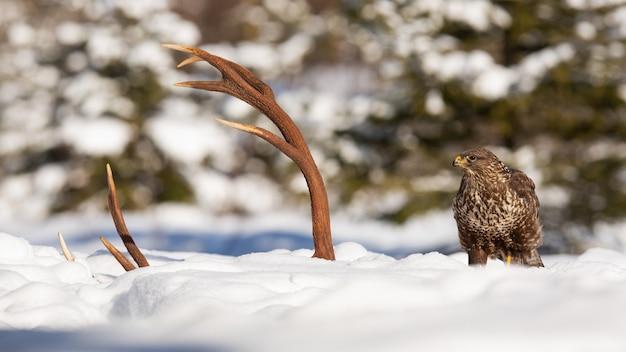Falcon is a bird of prey known for its speed and agility, while a hawk is a broad term encompassing various birds of prey. These two birds differ in their size, hunting techniques, and habitats they inhabit.
Both falcons and hawks are powerful hunters, but falcons are known for their exceptional speed, making them efficient aerial predators. On the other hand, hawks have a broader range of hunting strategies, including soaring and perching. This article will explore the similarities and differences between these two birds of prey, highlighting their unique characteristics and hunting behaviors.
Additionally, we will delve into their physical attributes, habitats, and the role they play in maintaining the balance of their ecosystems. So, let’s dive into the fascinating world of these magnificent birds and discover what sets them apart.
1. Anatomy And Physical Characteristics
Falcon and hawk have different wingspans, with falcon having a narrower span. Their beak structures also differ, falcons have a hooked beak for tearing prey while hawks have a curved beak for biting. In terms of flight patterns, falcons are known for their high-speed dives and agile movements, while hawks have a slower, soaring flight style.
Falcons are capable of reaching top speeds of over 240 miles per hour, making them the fastest bird in the world. Hawks, on the other hand, fly at a more moderate pace. These distinctions in anatomy and flight behavior contribute to the unique characteristics and adaptations of both falcons and hawks.

Credit: m.youtube.com
2. Hunting Techniques And Prey Choices
Falcons and hawks employ unique hunting techniques and have distinct prey choices. Falcons are known for their speed and agility in the air, utilizing high-speed dives to catch their prey off-guard. They often employ a strategy called “stooping,” where they dive from high altitudes to deliver a swift and lethal blow to their target.
On the other hand, hawks use a variety of hunting techniques, such as soaring, hover-hunting, and still-hunting to surprise and capture their prey. Falcons mainly prey on small to medium-sized birds, while hawks have a diverse dietary preference, including small mammals, reptiles, insects, and even other birds.
Their distinct hunting strategies and prey choices make falcons and hawks fascinating creatures in the world of avian predators.
3. Adaptations For Survival
Falcons and hawks have unique adaptations for survival. Their specialized vision gives them an advantage in hunting. Their talon strength and gripping capabilities allow them to catch and hold onto their prey. They have different nesting habits and protective instincts, with some building nests in trees and others on cliffs.
These adaptations help them to thrive in their respective habitats. Falcons and hawks are remarkable hunters, using their skills and traits to ensure their survival in the wild.
Conclusion
Both falcons and hawks are fascinating birds of prey that showcase impressive hunting skills and distinctive characteristics. The falcon, known for its exceptional speed and agility, is a master in aerial pursuit and excels at hunting small birds in mid-air.
On the other hand, the hawk, with its sharp eyesight and sharp talons, is well-suited for hunting mammals and reptiles on the ground. While falcons display a sleek and streamlined appearance, hawks come in a variety of shapes and sizes, each adapted to their specific hunting habits.
Whether it’s the Peregrine Falcon or the Red-tailed Hawk, both birds play an essential role in maintaining ecological balance and are valued for their contributions to pest control. Understanding the similarities and differences between falcons and hawks deepens our appreciation for the diversity of wildlife in the avian world.
So next time you catch a glimpse of a majestic bird soaring through the sky, take a moment to marvel at the incredible abilities of these remarkable creatures.








